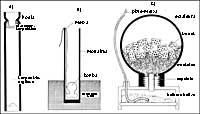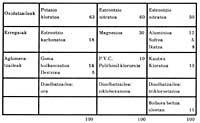Fireworks Fireworks
1985/12/01 Aizpurua Sarasola, Joxerra Iturria: Elhuyar aldizkaria
Are the origins in China?
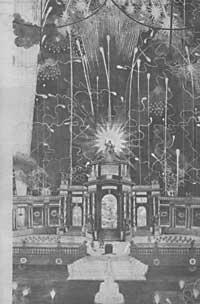
There is great ignorance of the origin of fireworks. However, we know that we must somehow relate fireworks to the discovery of gunpowder. In this way, one must question the theories of those who place them in Greece, Rome, Egypto or India.
The first reliable data was provided by Marco Polo. Chinese VIII. o IX. In the twentieth century they knew the black gunpowder and its consequences. In Europe, on the other hand, the XIV. Until the nineteenth century black gunpowder was not known and this reissue came to the hands of the German friar Berthold Schwart.
Black gunpowder took its first steps in the war, but the XVI. In the twentieth century it is used in the parties of the Court as fireworks to represent the main battles. In this way, at least at the beginning, we could say that artificial fire has wanted to express military acts. the black powder to which substances such as cresal (potassium nitrate), sulfur, coal, iron (in chips), antimony sulfide (III), etc.
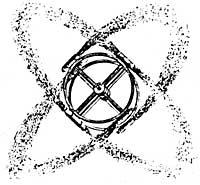
Not only the French, but also the English used fireworks in their patronal fiestas. Let's remember that in 1487 at the coronation of the Elisabeth of York you see a great dragon throwing flames at the Thames River (Thames); it is a huge dragon that launched and drew the flame with the help of spectacular savages... XVII. These fables that will last until the nineteenth century are the historical constancy of fireworks.
On the other hand, the Chinese did not give so much importance to the visual sense, but to the auditory sense. That is why the XVIII. The European and Chinese fireworks gave rise to different evolutions until the nineteenth century.
Fires of Kings and Lords?
The evolution of fireworks returns again to Europe.
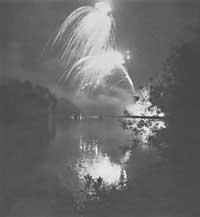
As the pyrotechnics and the decoration had to go together, there was the union of architects and artificial. But the writings of this time denounced the reefs of this union of convenience, since each one put his food above the others. Thus, at the first wedding of the French Doping, in 1745, was projected the launch of fireworks from the Pont-Neut, where the spectators were accumulated until the Pont-Royal. The project of the decoration of these fires, probably by Gabriel de Saint-Aubin, was so beautiful and wonderful that the artifices could not find suitable fires for this project.
XVIII. From the twentieth century the artifice makes many trips, so the pyrotechnic shows in Europe are homogenized. Although the peculiarities of the nations are lost, since these shows were held in international festivals, they had a similar tone to the Eurovision. It also extended the custom of a nation offering fires to another, and thus, in 1704, the Republic of Venice offered a spectacle to the Parisians in the celebrations by Luzzara. Also in 1739 the Spanish embassy Louis XV. He presented fireworks in honor of his daughter's marriage.
XIX. In the twentieth century the relations between pyrotechnics and architecture and pyrotechnics are broken into industry.
Scientific vision of fireworks
With the transformation of pyrotechnics into industry, new discoveries are produced in the chemical field. The attractive colors are obtained by mixing several substances.
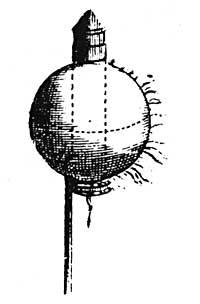
From the technical vision, many lines can be filled with references to different formulas and substances. Only broadly, we will touch this subject.
In Part A of Figure 2 we have the structure of a jet (taps, turns, etc. ). ). In part B we have a pump and in part C the Roman candle.
In general, an artificial fire contains three types of substances: oxidizer, fuel and binder. As an example, in the following table, three different ways of obtaining red stars are shown.
As for the colors you can say other things. The red colors are powders of iron, steel or cast iron. Yellow colors are obtained by atomic sodium radiation. Green using barium derivatives. But the quality of pyrotechnics is measured by the blue color and, of course, the difficulty to achieve it is greater. Copper salts have been used, have been and are used, but at present the toxicity of this product has not been overcome. It is also difficult to get white lights, as very high temperatures (above 500°C) are needed.
A need: security
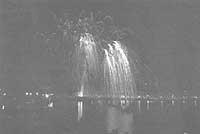
In recent years, numerous pyrotechnics factories have exploded, in which several people have died. Pyrotechnic industries must comply with internal and external safety standards. Safety is difficult to achieve, and it must be taken into account that this industry has not yet lost its artisanal flavor. However, day by day security limits have been improving in most industries, so we expect there will be no accidents.
And tomorrow what?
At the beginning of this article, it has been mentioned, although briefly, the relationship of pyrotechnics with military space. Of course, if military research is leading, this will affect pyrotechnics. Thus, pyrotechnics are starting from the path of automation, with three main objectives:
- Improvement of quality. the Gothic of productivity.
- Greater security.
Undoubtedly, it can be said that in the coming years we will see wonderful fires and also with greater security.

Gai honi buruzko eduki gehiago
Elhuyarrek garatutako teknologia




